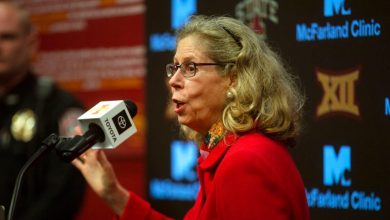What the Pandemic Did to Enrollments at Regional Public Colleges

Regional public colleges have long been workhorses in their states, providing residents with affordable and accessible higher education. These institutions had already been coping with years of state budget cuts and underfunding, compared with flagships, and many regional public institutionss faced daunting demographic trends that spelled trouble for the future. What new challenges did Covid-19 pose for them?
The Chronicle used preliminary federal data released last month to explore how the pandemic has affected enrollments at regional public colleges. We analyzed fall-2020 and fall-2019 enrollment data from the National Center for Education Statistics at over 400 regional public institutions.
We defined regional public colleges as four-year, public institutions with the Carnegie classification of either doctoral, master’s, or baccalaureate institution. Doctoral universities with “very high research activity” and flagships were excluded.
Overwhelmingly, regional public colleges saw drops in full-time enrollment — nearly three out of four institutions experienced declines from the fall of 2019 to the fall of 2020. Nationwide, enrollment for this group of institutions dropped by 2 percent, representing over 65,000 students. Regional public colleges like Texas Southern University and Harris-Stowe State University, in Missouri, had some of the steepest declines, reporting enrollment drops of 26 percent and 23 precent, respectively.
Our key findings are below.
Widespread Enrollment Declines
Just five states experienced growth in their regional public institutions. Vermont and Alaska fared the worst — with regional public colleges in those states seeing a drop of 17 percent and 13 percent, respectively.
Big Drops in Freshman Enrollment
At three out of four states, freshman enrollment at regional public colleges declined more than did full-time enrollment. Here are the states where the gaps between the two were largest.
Enrollment at Regional Colleges Fell Farther Than at Flagships
More than two out of three states saw enrollment at regional public colleges drop more than it did at flagship institutions in those states. Here’s where the biggest differences were.
Regional Public Colleges in Towns Fared the Worst
But the 23 regional public colleges in rural areas experienced the smallest enrollment declines.
Explore the Data
Figures represent full-time enrollment.
Note: Regional public institutions were defined as public, degree-granting institutions that were eligible to participate in Title IV federal financial-aid programs, were within the United States, and had a Carnegie classification of one of the following:
Doctoral Universities: High Research Activity, Doctoral/ Professional Universities (very high research and flagship institutions were excluded); Master’s Colleges & Universities: Larger Programs, Medium Programs, Small Programs; Baccalaureate Colleges: Arts & Sciences Focus or Diverse Fields institution. Enrollment figures are for total full-time students, and freshman enrollment is for first-time, full-time, degree-seeking undergraduates in the fall semester.
Source link






